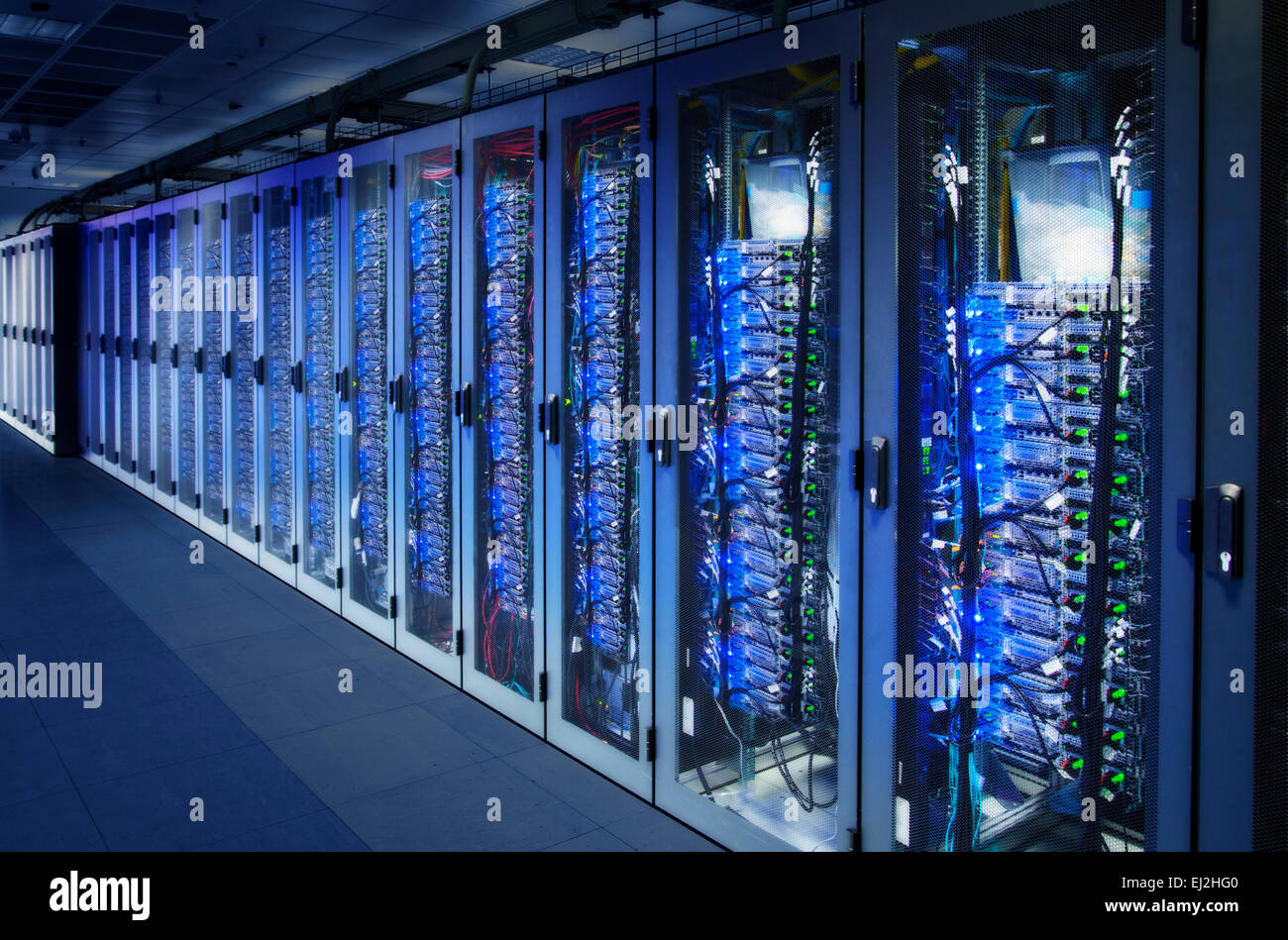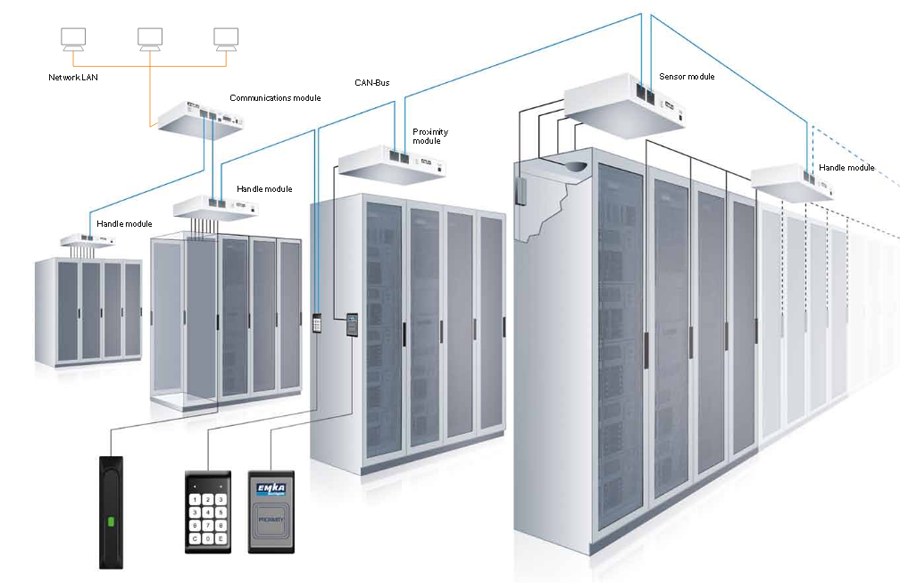Data Center Rack Cabinet Basics

A data center rack cabinet is a fundamental component in any data center, providing a standardized and organized framework for housing and managing IT equipment. Its primary purpose is to streamline the deployment, maintenance, and accessibility of servers, networking devices, and other critical infrastructure within a data center environment.
Types of Data Center Rack Cabinets
Rack cabinets come in various types, each designed to cater to specific needs and applications. Understanding the differences between these types is crucial for selecting the right cabinet for a given data center setup.
- Open Frame Cabinets: These cabinets provide a basic framework with open sides, allowing for greater airflow and easy access to equipment. They are often used in smaller data centers or for applications where budget constraints are a factor.
- Closed Frame Cabinets: Closed frame cabinets feature solid sides, offering enhanced security and environmental control. They are ideal for applications where data security and temperature regulation are critical.
- Wall Mount Cabinets: These cabinets are designed to be mounted directly on walls, maximizing space utilization in smaller data centers or offices. They are suitable for housing networking equipment, security systems, and other devices.
- Enclosed Cabinets: Enclosed cabinets provide a fully enclosed environment with doors and locks, offering the highest level of security and environmental control. They are commonly used for sensitive applications where data protection is paramount.
- Network Cabinets: Network cabinets are specifically designed for housing networking equipment, featuring specialized features like cable management systems and ventilation options to support high-density network deployments.
Applications and Use Cases
Data center rack cabinets find applications across various industries and IT environments.
- Server Housing: The most common application of rack cabinets is for housing servers, providing a secure and organized platform for managing server deployments.
- Network Equipment: Rack cabinets are essential for housing networking devices, such as switches, routers, and firewalls, ensuring efficient network connectivity and management.
- Storage Systems: Data storage systems, including SANs and NAS devices, are often housed in rack cabinets to optimize space utilization and accessibility.
- Telecommunications: Rack cabinets are used in telecommunications infrastructure to house telecom equipment, enabling efficient network management and service delivery.
- Security Systems: Security systems, such as surveillance cameras, access control systems, and intrusion detection systems, are often deployed in rack cabinets for centralized management and monitoring.
Components and Features of a Data Center Rack Cabinet

Data center rack cabinets are the backbone of any modern data center, providing a structured and organized environment for housing and managing critical IT equipment. These cabinets are designed to meet specific industry standards and offer a range of features that enhance efficiency, reliability, and security.
Understanding the components and features of a data center rack cabinet is essential for optimizing equipment deployment, ensuring proper airflow, and maximizing overall system performance.
Rack Cabinet Frame, Data center rack cabinet
The frame of a data center rack cabinet provides the structural foundation for the entire system. It is typically made of robust materials like steel or aluminum, ensuring stability and durability. The frame supports the various components, including the mounting rails, doors, and other accessories.
The frame is typically designed to meet industry standards like EIA-310-D or IEC 60297-3-10, ensuring compatibility with standard server and networking equipment. The height of the cabinet is often measured in rack units (U), with each U representing 1.75 inches. Standard rack cabinets come in various heights, such as 42U, 45U, or 47U, accommodating different equipment configurations.
Mounting Rails
Mounting rails are horizontal bars located within the cabinet, providing a secure and standardized way to mount IT equipment. These rails are typically made of metal and are designed to accept various mounting brackets and accessories.
The mounting rails are spaced according to industry standards, allowing for easy and consistent installation of equipment. The spacing between rails is typically 19 inches, accommodating the standard width of server and network devices. The mounting rails can be adjusted vertically, allowing for flexibility in equipment placement and cable management.
Doors and Panels
Data center rack cabinets are typically equipped with front and rear doors that provide access to the installed equipment. The doors can be designed with different features, including:
- Solid doors: Offer security and protection for the equipment.
- Perforated doors: Allow for airflow while maintaining some level of security.
- Glass doors: Provide visibility to the equipment while offering a degree of security.
The doors can also be equipped with locks for security purposes, and some cabinets may include side panels for additional access and ventilation.
Power Distribution
Power distribution is a critical aspect of data center rack cabinets, ensuring reliable and efficient power delivery to the installed equipment.
Rack cabinets often include various power distribution units (PDUs), which are devices that provide multiple outlets for connecting equipment to the power source. PDUs can be:
- Basic PDUs: Offer simple power distribution with minimal features.
- Metered PDUs: Provide monitoring capabilities, allowing for tracking of power consumption and identifying potential issues.
- Switched PDUs: Allow for remote control and management of power outlets, enabling individual or group power cycling of connected devices.
PDUs are typically mounted within the cabinet, offering convenient access to power outlets for the installed equipment.
Cable Management
Effective cable management is essential for maintaining a clean and organized data center environment. Rack cabinets offer various features to facilitate cable organization, including:
- Cable management arms: Provide horizontal and vertical pathways for organizing cables, reducing clutter and improving airflow.
- Cable trays: Offer dedicated pathways for running cables, separating different types of cables and preventing tangling.
- Cable ties: Help secure cables and keep them organized within the cabinet.
Proper cable management not only improves aesthetics but also enhances airflow, reduces the risk of tripping hazards, and facilitates troubleshooting and maintenance.
Security Features
Data center rack cabinets are designed to protect sensitive IT equipment from unauthorized access and environmental hazards. Common security features include:
- Locks: Secure doors and panels to prevent unauthorized access.
- Access control systems: Integrate with building security systems to restrict access to authorized personnel.
- Alarms: Detect unauthorized entry or environmental changes, alerting security personnel.
Security features are crucial for safeguarding valuable equipment and data, ensuring business continuity and data integrity.
Airflow Management
Proper airflow is critical for maintaining optimal operating temperatures within the data center rack cabinet.
Rack cabinets are designed to facilitate airflow, minimizing heat buildup and preventing equipment failures. Key airflow management features include:
- Perforated doors and panels: Allow for airflow to circulate within the cabinet.
- Blanking panels: Fill empty spaces in the cabinet, reducing air bypass and improving airflow efficiency.
- Fans: Provide forced airflow, ensuring proper cooling of the equipment.
Effective airflow management ensures that heat generated by the equipment is dissipated efficiently, preventing overheating and extending the lifespan of the IT equipment.
Sample Rack Layout
A well-designed rack layout is crucial for optimizing space utilization, ensuring proper airflow, and facilitating maintenance. A sample rack layout might include:
| RU | Equipment | Notes |
|---|---|---|
| 1-4 | Server 1 | High-performance server requiring dedicated power and cooling |
| 5-8 | Network Switch | Centrally located for network connectivity |
| 9-12 | Storage Array | Provides data storage and backup capabilities |
| 13-16 | Server 2 | General purpose server with standard power and cooling requirements |
| 17-20 | PDU | Provides power distribution for the rack |
| 21-24 | Empty | Reserve space for future equipment expansion |
| 25-28 | Server 3 | Web server with high bandwidth requirements |
| 29-32 | Firewall | Secures network traffic and protects against unauthorized access |
| 33-36 | UPS | Provides backup power in case of power outages |
| 37-40 | Empty | Reserve space for future equipment expansion |
| 41-44 | Patch Panel | Provides centralized point for cable termination and management |
This layout prioritizes the placement of high-power consuming equipment at the bottom of the rack, allowing for efficient heat dissipation. It also reserves space for future expansion, ensuring flexibility and scalability.
Data Center Rack Cabinet Installation and Management

Installing and managing data center rack cabinets is crucial for ensuring optimal performance and reliability of IT equipment. Proper installation ensures secure housing and efficient operation, while effective management practices guarantee continuous uptime and prevent potential issues.
Rack Cabinet Installation
Installing a data center rack cabinet involves several steps to ensure it is properly positioned, grounded, and ready to house equipment.
- Choosing the Right Location: Selecting the appropriate location for the rack cabinet is crucial. Consider factors such as available space, proximity to power sources, network connections, and environmental conditions. Ensure the location is well-ventilated and free from excessive heat, humidity, or dust.
- Preparing the Installation Area: Once the location is chosen, prepare the area by clearing any obstructions and ensuring the floor is level.
- Grounding the Cabinet: Proper grounding is essential for electrical safety and preventing damage to equipment. Connect the cabinet’s grounding point to the building’s grounding system using a heavy-duty grounding wire.
- Assembling the Cabinet: Follow the manufacturer’s instructions for assembling the rack cabinet. This may involve attaching side panels, installing castors or feet, and securing any accessories.
- Mounting Equipment: Install the IT equipment into the rack cabinet, ensuring proper alignment and securing with mounting screws.
- Cable Routing: Carefully route cables through the rack cabinet, using cable management accessories like cable ties, straps, and organizers. This prevents tangling and improves airflow.
- Testing and Verification: After installation, test all connections and ensure the equipment is functioning properly. Verify that all components are securely mounted and that the cabinet is grounded.
Rack Cabinet Management
Managing data center rack cabinets involves implementing best practices to optimize equipment organization, power monitoring, and environmental control.
- Equipment Organization: Maintain a clear and organized rack layout. Label equipment, cables, and ports for easy identification. Use rack-mount shelves, drawers, and other accessories to optimize space and improve accessibility.
- Power Monitoring: Regularly monitor power consumption and distribution within the rack cabinet. Use power monitoring devices to track real-time power usage, identify potential overloads, and ensure efficient power management.
- Environmental Control: Monitor and control environmental conditions within the data center and rack cabinets. Ensure optimal temperature, humidity, and airflow to prevent equipment overheating and ensure optimal performance.
Rack Cabinet Inspection and Maintenance
Regular inspections and preventative maintenance are essential for ensuring the longevity and reliability of data center rack cabinets.
- Visual Inspection: Visually inspect the cabinet for any signs of damage, corrosion, or wear and tear. Check for loose connections, bent or broken components, and any signs of overheating.
- Grounding Verification: Verify that the grounding connection is secure and intact. Use a multimeter to test the grounding resistance.
- Cable Management: Ensure cables are properly routed, secured, and organized.
- Equipment Operation: Check the functionality of all equipment within the cabinet. Monitor power consumption, temperature, and other operational parameters.
- Cleaning: Regularly clean the cabinet and equipment to remove dust and debris. Use a soft cloth and compressed air for cleaning.
Just as a data center rack cabinet provides a structured and organized environment for critical IT equipment, a well-designed shoe cabinet can streamline your home’s entryway. Consider the dayson espresso multi shelf shoe cabinet for a stylish and functional solution.
Similarly, a data center rack cabinet ensures efficient airflow and accessibility, optimizing the performance of your server infrastructure.
Data center rack cabinets are essential for housing and organizing IT equipment, ensuring efficient airflow and accessibility. Just like a laundry room cabinet with drying rack provides a designated space for laundry and drying, data center rack cabinets offer a structured environment for servers, networking devices, and other critical components, optimizing performance and minimizing downtime.
